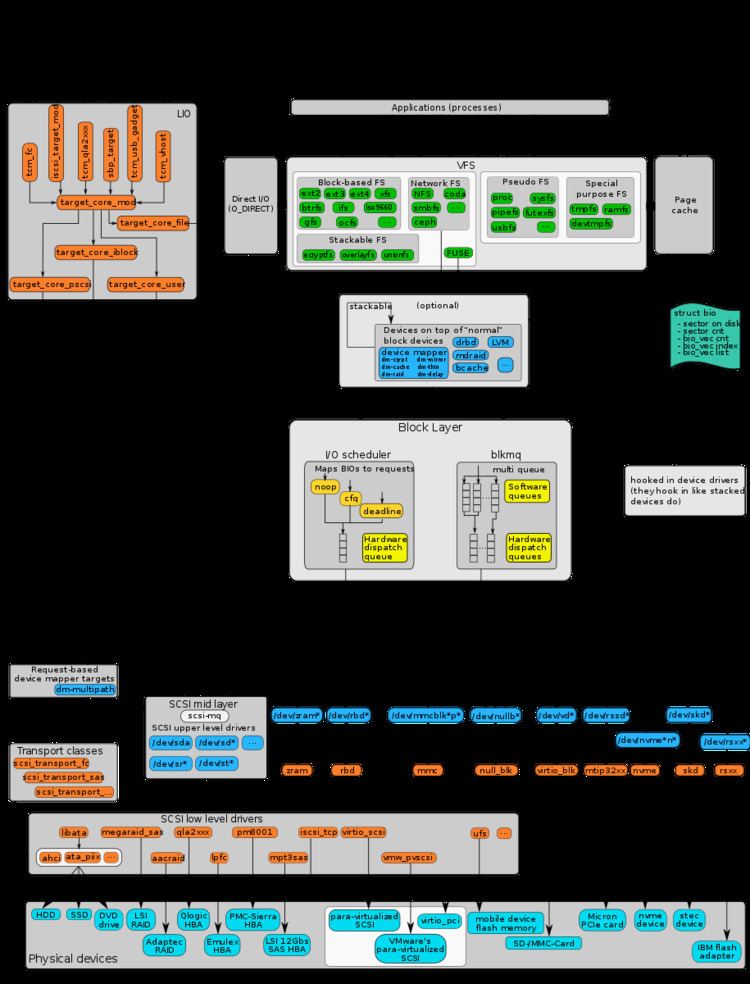 | ||
The device mapper is a framework provided by the Linux kernel for mapping physical block devices onto higher-level virtual block devices. It forms the foundation of LVM2, software RAIDs and dm-crypt disk encryption, and offers additional features such as file system snapshots.
Contents
Device mapper works by passing data from a virtual block device, which is provided by the device mapper itself, to another block device. Data can be also modified in transition, which is performed, for example, in the case of device mapper providing disk encryption or simulation of unreliable hardware behavior.
This article focuses on the device mapper implementation in Linux kernel, but the device mapper functionality is also available in both NetBSD and DragonFly BSD.
Usage
Applications (like LVM2 and EVMS) that need to create new mapped devices talk to the device mapper via the libdevmapper.so shared library, which in turn issues ioctls to the /dev/mapper/control device node. Configuration of the device mapper can be also examined and configured interactively—dmsetup(8) utility.
Both of these two userspace components have their source code maintained alongside the LVM2 source.
Features
Functions provided by the device mapper include linear, striped and error mappings, as well as crypt and multipath targets. For example, two disks may be concatenated into one logical volume with a pair of linear mappings, one for each disk. As another example, crypt target encrypts the data passing through the specified device, by using the Linux kernel's Crypto API.
The following mapping targets are available:
/dev/zero, all reads return blocks of zeros, and writes are discardedApplications
The following Linux kernel features and projects are built on top of the device mapper:
dmraid(8) – provides access to "fake" RAID configurations via the device mapperkpartx(8) – utility called from hotplug upon device maps creation and deletion